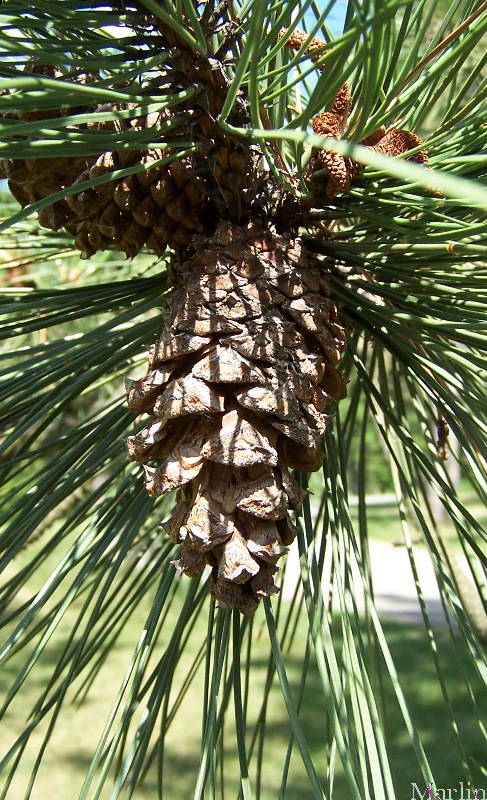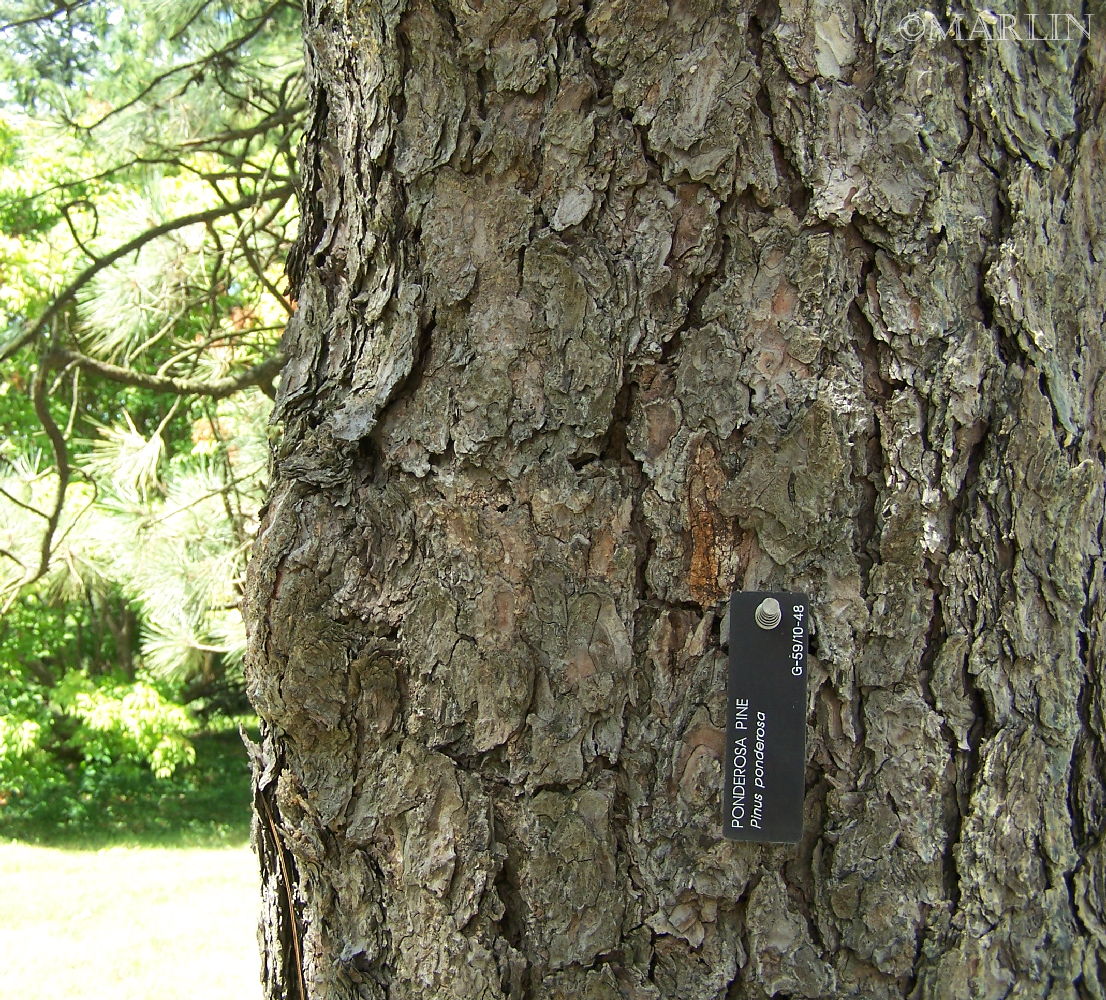Ponderosa Pine – Pinus ponderosa
Family Pinaceae: Pine, Cedar, Spruce, Fir
Pinaceae contains more than 250 species, all of which are native to the Northern Hemisphere.
Ponderosa pine, also called western yellow pine, is one of the most widely distributed trees in western North America. A major source of timber products, ponderosa pine forests are also important as wildlife habitat, for recreational use, and for esthetic value.
Ponderosa pine wood is principally used in millwork, including windows, doors, shelving, molding, knotty-pine paneling and dimension lumber. Sap used as glue and source of turpentine oils.

Ponderosa pine at the Morton Arboretum
Ponderosa Pine covers approximately 27 million acres of land in North America. Stands can be found from Canada to Mexico and from the Pacific Coast eastward to the Black Hills of South Dakota. Its growth range covers an area encompassing more than 35 percent of the total acreage of the U.S. (2)
Ponderosa Pine trees average 100′ to 160′ in height, with some exceeding 180′. The trees range from 2-4′ in diameter, with the rate of growth depending upon altitude, soil, temperature and rainfall.
Mature trees can be easily identified by their distinctive orange-brown bark which is arranged in large plates. The dark yellow-green needles are 5-10″ long and grow in clusters of three. The cones, similar in color to the bark, are 3-6″ long and 2-4″ in diameter. Seeds are 5/16-3/8″ long with a 3/4-1″ wing.
The wood is well suited for manufacturing which requires clear, splinter-free wood with a minimum of knots, resin and other unwanted characteristics. The large trees include substantial volumes of virtually clear sapwood with relatively few, widely-spaced knots. Shop and Factory lumber is graded to yield clear material suitable for fabrication. Such wood is selected to be almost completely free from pitch and resin pockets, has an even grain and is dimensionally stable. (2)
Ponderosa pine seeds are consumed by a great many birds and small mammals such as mice, chipmunks, and tree squirrels. In years of low cone production, the potential seed crop may be severely reduced. Squirrels clip many of the cone bearing twigs, destroying flowers and conelets. Because of ponderosa pine’s intolerance of shade, it tends to grow in even-aged stands and is usually managed by that method. Uneven-aged stands might appear common throughout the drier portion of its range but are in reality a mosaic of even-aged groups.

Damaging Agents- Rabbits and hares injure or kill many seedlings, and pocket gophers are especially destructive. In areas where pocket gopher populations are high all seedlings and many saplings may be destroyed. Squirrels and porcupines attack sapling and pole-size trees and, although rarely killing them, deform the stems on which they feed. Repeated browsing by deer has stunted seedlings for 50 years or more. In the absence of regulation, sheep and cattle have damaged reproduction by trampling, bedding, and occasional browsing.
The western pine beetle (D. brevicomis) is a common cause of mortality in over mature, decadent trees within the range of ponderosa pine from Baja California, north into Oregon, Washington, western Canada, Idaho, and western Montana. During epidemics, however, apparently healthy, vigorous trees are also killed. During the drought years of the 1930’s, losses from western pine beetle in the Pacific Northwest were so heavy that many foresters feared for the pine stands’ continued existence. The mountain pine beetle (D. ponderosae) is the most destructive and enemy in the central and southern Rocky Mountains.
References:
1. USDA United States Forest Service Silvics Manual Pinus ponderosa
2. Western Wood Products Association, Ponderosa Pine
Trees Index | Pine Family | Beech, Oak | Nut Trees | Birch Family | Magnolias
Tree Encyclopedia / North American Insects & Spiders is dedicated to providing family-friendly educational
resources for our friends around the world through large images and macro photographs of flora and fauna.


